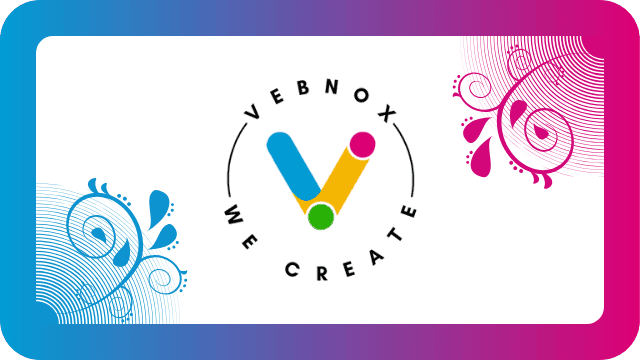The Complete Guide to Branding: Elevate Your Business Identity
Table of Contents
Understanding Branding
Branding is a fundamental aspect of any business’s identity, encompassing the values, vision, and promises that a company communicates to its audience. It goes beyond mere aesthetics and extends into the realm of perception; branding creates a unique presence in the marketplace. Effective branding services are essential for shaping how a business is perceived, helping to differentiate it from competitors. Unlike marketing, which focuses on promoting products or services, branding establishes an emotional connection with consumers, ultimately defining their experience and expectations.
The significance of branding lies in its ability to forge a lasting impression in the minds of consumers. A strong brand identity, cultivated through excellent logo design and consistent messaging, can enhance brand recognition and loyalty. When customers identify with a brand, they are more likely to become repeat buyers, fostering customer loyalty that can be invaluable to a business’s long-term success. This loyalty is often rooted in trust, which is cultivated through consistent delivery of quality products or services aligned with the brand’s promises.
The advantages of robust branding are manifold. A well-crafted brand strategy not only establishes a clear business image but also enables a company to effectively tap into its target market. With the right branding solutions, businesses can gain a significant competitive edge by resonating deeply with their audience. Whether through custom logos, visual branding, or professional branding efforts, the coherence across all touchpoints strengthens corporate identity and helps to establish brand consistency. Ultimately, branding serves as a powerful tool that influences consumer choices and drives business development, paving the way for sustained growth and success.
Elements of a Strong Brand
A strong brand is built on several key components that work together to create a cohesive and recognizable business identity. Firstly, the brand name serves as the cornerstone of brand recognition; it is the first impression consumers have and plays a crucial role in how the brand is perceived. An effective brand name should be memorable, relatable, and reflective of the values and offerings of the business.
Next, the logo design is a visual representation of the brand that encapsulates its essence. A well-designed logo contributes significantly to brand identity and plays a pivotal role in the overall branding services a business employs. Custom logos should embody the brand’s personality and instill confidence in the consumer, as they often become synonymous with trust and loyalty.
Additionally, a carefully curated color palette is essential in visual branding. Colors evoke emotions and convey messages; thus, the right combination can enhance brand recognition and distinguish a brand from competitors. Companies like Coca-Cola and Tiffany & Co. expertly leverage their color palettes to create an immediate connection with consumers.
Typography is another fundamental element that contributes to brand consistency. The choice of typefaces can influence perceptions of a brand’s professionalism and creativity. Consistent use of typography across various platforms reinforces the business image and supports effective brand development.
Finally, brand messaging plays a critical role in communicating the brand’s values and mission. Effective messaging should resonate with the target audience, reinforcing the brand’s identity and establishing emotional connections. Strong messaging not only reflects the core of the brand but also guides customer behavior and loyalty.
By thoughtfully integrating these elements, businesses can create powerful branding solutions that elevate their market presence and foster lasting relationships with customers. Successful brands consistently demonstrate how these components interrelate and contribute to their overall brand strategy.
Developing Your Brand Identity
Creating a distinct brand identity is a critical step for any business entering a competitive landscape. To develop a compelling brand identity, businesses should begin with comprehensive market research. This involves analyzing competitors, understanding industry trends, and identifying potential market gaps. By gathering this information, businesses can ensure that their branding services stand out and meet the unique needs of their target audience.
Next, defining the target audience is essential. This requires businesses to delve into demographics, preferences, and behaviors of potential customers. Clearly understanding who the brand intends to reach will inform not just the marketing strategies but also the tone and message behind the brand identity. Factors such as age, gender, income level, and lifestyle play crucial roles in shaping the visual branding and communication strategy.
Developing a brand mission and vision statement is another pivotal component. This statement encapsulates the core values and objectives behind the brand. It informs both internal strategies and external perceptions, ensuring a cohesive message that aligns with brand recognition goals. A well-articulated mission and vision cultivates a sense of trust and loyalty among consumers, further enhancing the brand’s image.
Visual elements, including logo design and color palettes, are vital as they are often the first interaction customers have with the brand. Investing in professional branding services for custom logos and identity design ensures that these elements resonate with the audience and reflect the brand’s core values. Consistency across all platforms, from digital branding to physical marketing materials, strengthens brand development and fosters recognition. Practical tools, such as branding templates and strategy frameworks, can further assist businesses in producing a comprehensive and cohesive brand identity.
Ultimately, a well-defined brand identity is not just about aesthetics; it is about creating an emotional connection with the audience. By prioritizing consistency and clarity in branding solutions, businesses can cultivate a strong corporate identity that endures and evolves with time.
The Role of Brand Messaging
Brand messaging serves as the cornerstone of effective business branding. It encompasses the language, tone, and ideas that a company uses to communicate with its audience, which ultimately shapes the perception of its brand identity. An effective brand message resonates with customers, creating an emotional connection that differentiates the business from its competitors.
Developing a distinct brand voice is essential for any company looking to establish its presence in the market. This voice should reflect the business’s values and mission, allowing for a consistent representation across all platforms. For instance, a professional service firm may adopt a formal tone that conveys expertise, whereas a creative startup might opt for a more casual and playful approach. Crafting compelling taglines is another critical aspect of brand messaging, as these concise phrases encapsulate the essence of the brand, fostering quick recognition and recall among consumers.
Moreover, aligning messaging with brand values is crucial for authenticity. This alignment ensures that brand communications are genuine and reflect what the organization stands for, increasing trust among the audience. It is vital for businesses to evaluate their brand messaging regularly to maintain relevance and clarity as markets and consumer perceptions evolve.
Consistency is also a key driver of brand recognition. Maintaining coherent messaging across various platforms—be it social media, websites, ads, or packaging—is essential. This consistency enhances brand visibility and strengthens brand identity, making it easier for customers to identify and associate with the business. Organizations can utilize branding solutions that feature brand consulting and brand strategy to ensure that all messaging reflects the desired corporate identity.
Ultimately, a well-crafted brand message not only communicates what a business offers but also encapsulates the essence of its identity, helping to build a strong and consistent brand that customers recognize and trust.
Building Brand Presence Online
In today’s digital age, establishing a robust online presence is essential for effective brand recognition and overall business branding. Various platforms and strategies exist to enhance a brand’s visibility and engagement with target audiences, each playing a critical role in shaping brand identity.
Social media marketing is one of the most powerful tools for building brand presence. Platforms like Facebook, Instagram, and LinkedIn not only facilitate direct interaction with potential customers but also enable businesses to disseminate their brand image consistently across various channels. By utilizing custom branding services tailored to each platform, companies can ensure that their messaging aligns with their brand strategy while reaching a broader audience.
Website development is equally crucial in this digital landscape. A professionally designed website serves as a central hub for brand information, reinforcing business identity. This digital space not only showcases business logo design but also features essential components such as product information, testimonials, and contact details. By integrating SEO strategies into the website content, brands can improve their search engine rankings, making it easier for potential customers to discover their products or services.
Content marketing complements the above strategies by establishing authority and credibility in your industry. Regularly publishing informative blog posts, videos, and infographics can enhance visual branding and engage the audience creatively. This consistent output allows brands to develop a narrative that resonates with their customers, ultimately fostering brand loyalty.
In essence, building an online brand presence requires a multifaceted approach involving social media, website development, SEO, and content marketing. Investing time and resources into these areas can create a cohesive and professional branding framework that enhances business image and drives meaningful engagement with the target audience.
Branding in the Age of Social Media
In the contemporary digital landscape, social media platforms such as Instagram, Facebook, Twitter, and LinkedIn have become indispensable tools for branding services. With billions of active users, these platforms provide brands unique opportunities to enhance their visibility and engage with their target audiences on a personal level. Effective business branding in this environment requires a strategic approach to identity design, allowing businesses to convey their brand identity consistently across various online channels.
One of the most powerful aspects of social media branding lies in fostering authentic interactions with consumers. Brands that prioritize genuine engagement can cultivate a loyal customer base by demonstrating transparency and approachability. Regularly sharing updates, behind-the-scenes content, or stories that resonate with audiences can help build brand recognition and strengthen business image. Additionally, encouraging user-generated content can serve as a testament to brand development, as customers share their experiences and showcase how they utilize products or services. By amplifying this type of content, brands not only boost engagement but also enhance their credibility.
Influencer partnerships have also emerged as a significant component of digital branding. Collaborating with individuals who have established authority and a loyal following can amplify a brand’s messaging and help reach new audiences. It is essential, however, to choose influencers whose values align with the brand’s identity to maintain cohesiveness in brand strategy. Monitoring online feedback and responding to critiques or praise is equally crucial. Active engagement with customers not only aids in adapting to their evolving needs but also reinforces brand consistency. This open communication fosters trust and reliability, which are pivotal in building a strong corporate identity.
Ultimately, navigating the complexities of social media branding services requires a deep understanding of the impact these platforms have on contemporary consumer behavior. By harnessing the power of social media, businesses can significantly elevate their brand identity and drive success in today’s competitive market.
Measuring Brand Success
Measuring the success of branding endeavors is crucial for evaluating the effectiveness of brand identity initiatives and overall brand strategy. By utilizing a combination of metrics and analytical tools, businesses can gain meaningful insights into their branding services and tailor their strategies accordingly.
One of the primary indicators of brand success is brand awareness. This can be measured by surveys, social media mentions, and website traffic analytics. Understanding how recognizable your business logo design is among consumers provides a clear picture of its current standing. Additionally, tracking the reach and engagement of your visual branding across platforms can highlight how well your brand is resonating with the target audience.
Customer engagement plays a significant role in determining branding effectiveness. Metrics such as click-through rates, social media interactions, and customer feedback are helpful in assessing how your audience interacts with your branding efforts. For instance, analyzing the likes and shares of posts related to your custom logos can indicate how successful your branding solutions are in capturing attention.
Loyalty and sentiment analysis are other vital metrics for measuring brand success. Customer retention rates and repeat purchases often reflect brand recognition and consistency in delivering value. Furthermore, sentiment analysis tools can evaluate customer perception of your brand through reviews and social media interactions. This data helps in understanding areas that may require improvement in brand development and projecting a positive business image.
By monitoring these key performance indicators, businesses can derive actionable insights to refine their identity design and strengthen their corporate identity. Regular assessment of these metrics enables organizations to make data-driven decisions that enhance and evolve their branding strategies over time, ensuring alignment with customer expectations and market dynamics.
Evolving Your Brand
In today’s dynamic market landscape, brands must evolve to remain relevant and resonate with consumer preferences. The importance of adapting your brand identity can be illustrated by the continuous shifts in market trends. Companies that neglect the need to refresh their branding services risk losing customer loyalty and diminishing brand recognition. For instance, as consumer priorities change, such as the increasing demand for sustainability, businesses may need to reassess their brand strategy to align with these values.
There are several scenarios that may prompt a rebranding effort. A significant change in business direction, such as expanding product lines or entering new markets, often requires an updated business image. Moreover, mergers and acquisitions can necessitate a shift in corporate identity to unify the brand under a common vision. Additionally, companies facing negative public perceptions may find that a rebranding initiative can effectively restore trust and credibility. In all these cases, rebranding should be approached thoughtfully, ensuring that core values and principles endure throughout the transition.
When embarking on a rebranding journey, businesses should first conduct an in-depth analysis of their current brand identity. This should include a review of visual branding elements like logo design and overall aesthetics, as well as an evaluation of brand messaging. Engaging in brand consulting can provide valuable insights into how to maintain brand consistency while making necessary changes. It is essential to communicate clearly with customers during this process, reinforcing the message that although the brand may look different, its commitment to quality and service remains unchanged.
Successful examples of brand evolution can be seen in companies like Starbucks, which has continuously evolved its branding solutions to include ethical sourcing and community involvement, while maintaining its core identity. This illustrates how a thoughtful approach to brand development can enhance both brand recognition and customer loyalty.
Case Studies of Successful Branding
The landscape of branding is rich with examples of organizations that have successfully navigated challenges to create a distinct and powerful brand identity. These case studies illustrate how a combination of strategy, creativity, and innovation can lead to effective branding solutions that resonate with consumers and enhance brand recognition.
One exemplary case is Apple Inc., which has cultivated a robust brand identity through its commitment to innovation and superior product design. The company established a visually striking corporate identity by consistently utilizing minimalist design in its logo design and packaging. This consistency has reinforced consumer perceptions of Apple as a cutting-edge technology provider. Through careful brand strategy focusing on quality, Apple nurtures a strong emotional connection with its customers, setting a benchmark for business branding across various industries.
Another compelling example is Nike’s approach to branding, particularly its emphasis on storytelling through visual branding. Nike’s “Just Do It” campaign effectively conveys a message of empowerment and aspiration, allowing the brand to transcend its products and create a lifestyle identity. The integration of professional branding elements across diverse marketing channels has helped Nike maintain brand consistency, consistently appealing to its target audience. The company’s strategic use of custom logos further consolidates its position as a leader in sportswear, inspiring many other organizations engaged in brand development.
Moreover, a case study of Dove emphasizes the importance of authenticity in branding services. Dove’s real beauty campaign successfully challenged stereotypes related to beauty standards, which resonate profoundly with consumers. This strategic pivot not only bolstered brand perception but also engendered significant loyalty and engagement among a diverse audience, thus enhancing its business image. Through such branding efforts, Dove has positioned itself as a relatable and compassionate brand, demonstrating the power of identity design to connect with customers on a deeper level.
These case studies exemplify the myriad of strategies that successful brands employ to craft their identities, utilize creative elements, and navigate the complexities of the market. By examining these examples, businesses can glean insights to apply to their own branding initiatives, fostering stronger business identities and achieving lasting brand recognition.





Comments are closed